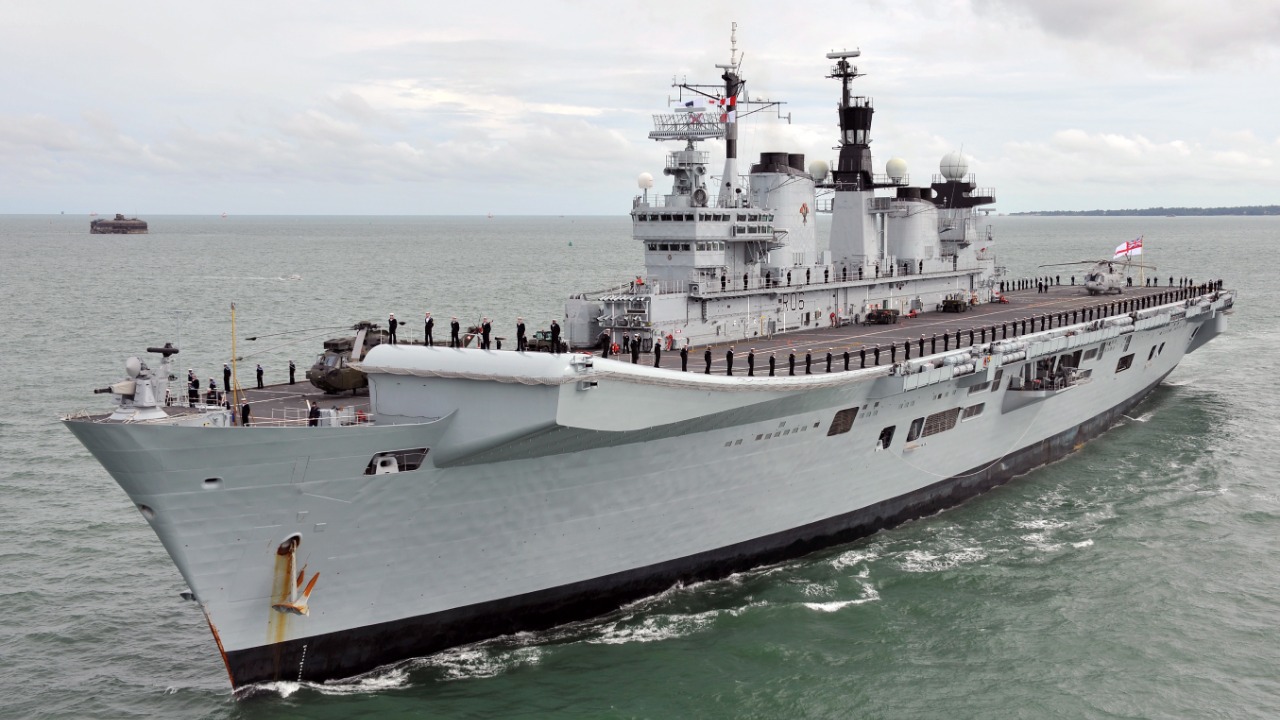
The United Kingdom’s Queen Elizabeth-class aircraft carriers, namely HMS Queen Elizabeth and HMS Prince of Wales, are designed to carry up to 36 F-35B Lightning II fighter jets. This capacity enhances the Royal Navy’s power projection capabilities in global operations. Amid rising global insecurity, the UK has confirmed the acquisition of 12 new F-35 A jets on June 25, 2025, which are capable of carrying US nuclear warheads. Furthermore, on October 6, 2025, UK carriers participated in joint drills with Indian naval aircraft carriers, demonstrating interoperability in the Indo-Pacific region.
Queen Elizabeth-Class Carrier Overview
The Queen Elizabeth-class carriers are impressive feats of naval engineering. With a displacement of approximately 65,000 tons and a length of 280 meters, these carriers are capable of supporting a full carrier strike group for extensive operations. The carriers are equipped with a ski-jump ramp and a Short Take-Off and Vertical Landing (STOVL) configuration, which is specifically designed for F-35B jets. This design allows for flexible deployment without the need for catapults, a feature that is integral to the carriers’ role in the UK’s Integrated Review as floating airbases for expeditionary warfare source.
Fighter Jet Capacity on UK Carriers
Under optimal conditions, each Queen Elizabeth-class carrier can operate with a maximum of 36 F-35B jets. This capacity is part of the Royal Navy’s planning for full-spectrum air power. However, during high-intensity missions, the carriers have a surge capacity that allows them to accommodate up to 40 aircraft, including jets and helicopters. Logistical factors such as deck space and hangar storage limit the actual deployments to 24-32 jets in routine operations source.
The F-35 Lightning II in UK Service
The F-35B variant is ideal for Queen Elizabeth-class decks due to its stealth features, sensor fusion, and vertical landing capability. The UK currently operates a fleet of 34 F-35B jets, with plans to expand to a total of 138 F-35s across variants for joint operations. The F-35’s multirole capabilities, including air-to-air combat and ground strikes, are integral to the carrier-based power projection source.
UK Acquisition of F-35A Jets
On June 25, 2025, the UK announced the purchase of 12 new F-35 A jets to enhance the Royal Air Force’s conventional takeoff and landing fleet. These F-35 A jets are capable of carrying US nuclear warheads, providing a strategic nuclear delivery option. However, integrating these land-based jets alongside carrier operations presents challenges, such as basing and maintenance source.
Comparisons with US Aircraft Carriers
When compared to US carriers, the Queen Elizabeth-class carriers’ capacity of 36 jets is smaller. For instance, the US Nimitz-class carriers can hold up to 90 aircraft, including fighters. The US Ford-class carriers, with their electromagnetic catapults, can accommodate over 75 jets. These differences highlight the UK’s focus on alliance interoperability versus the US emphasis on independent global reach source.
Recent Joint Exercises Involving UK Carriers
On October 6, 2025, joint drills were held between Indian and UK naval aircraft carriers. The drills focused on tactical maneuvers in the Indian Ocean. Participating assets included INS Vikrant from India and HMS Prince of Wales from the UK, showcasing bilateral maritime cooperation. These exercises resulted in improved coordination for future multinational operations against regional threats source.
More from MorningOverview